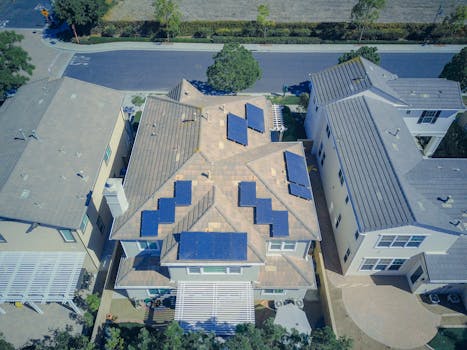“Maximize Your Power: Focus on Efficiency Ratings and Total Harmonic Distortion for Optimal Solar Inverter Performance.”
Solar inverter efficiency is a critical factor in the overall performance of a solar power system, as it determines how effectively the inverter converts the direct current (DC) generated by solar panels into alternating current (AC) for use in homes and businesses. Key metrics that matter include the inverter’s maximum efficiency, typically expressed as a percentage, which indicates the highest conversion rate achievable under optimal conditions. Additionally, the European Efficiency and CEC Efficiency ratings provide insights into performance under real-world conditions, accounting for variations in temperature and load. Understanding these numbers is essential for evaluating inverter performance, optimizing energy production, and ensuring a reliable return on investment in solar technology.
Understanding Solar Inverter Efficiency Ratings
When considering the efficiency of solar inverters, it is essential to understand the various ratings that define their performance. Solar inverters play a crucial role in converting the direct current (DC) generated by solar panels into alternating current (AC), which is used by most household appliances and fed into the electrical grid. Therefore, the efficiency of these inverters directly impacts the overall energy yield of a solar power system.
One of the primary metrics used to evaluate solar inverter efficiency is the “maximum efficiency” rating. This figure represents the highest efficiency the inverter can achieve under optimal conditions, typically around 95% to 98%. However, it is important to note that this maximum efficiency is rarely sustained in real-world applications. Factors such as temperature, shading, and the inverter’s load can significantly affect performance. Consequently, the “European Efficiency” rating is often considered more relevant, as it reflects the inverter’s performance under a standardized set of conditions that mimic typical usage scenarios. This rating usually falls between the maximum efficiency and the actual performance observed in everyday use.
In addition to these efficiency ratings, the “CEC Efficiency” (California Energy Commission) is another important metric to consider. This rating is particularly useful for consumers in the United States, as it provides a more realistic assessment of inverter performance by taking into account various operating conditions, including different temperatures and loads. The CEC Efficiency is generally lower than the maximum efficiency but offers a more accurate representation of how the inverter will perform over time.
Moreover, it is crucial to consider the “weighted efficiency” of an inverter, which averages its performance across a range of operating conditions. This metric is particularly valuable because it provides insight into how the inverter will perform throughout the day as sunlight conditions change. A high weighted efficiency indicates that the inverter can maintain good performance even when conditions are less than ideal, which is a significant advantage for homeowners looking to maximize their energy production.
Another aspect to consider is the inverter’s “self-consumption” rate, which refers to the amount of energy the inverter uses to operate itself. While this may seem like a minor detail, it can have a notable impact on overall system efficiency. A lower self-consumption rate means that more of the energy generated by the solar panels is available for use, thereby enhancing the overall efficiency of the solar power system.
Furthermore, the longevity and reliability of an inverter also play a critical role in its overall efficiency. Inverters that are built with high-quality components and robust designs tend to have longer lifespans and maintain their efficiency over time. Therefore, when evaluating solar inverters, it is essential to consider not only the efficiency ratings but also the manufacturer’s reputation and warranty offerings.
In conclusion, understanding solar inverter efficiency ratings involves more than just looking at a single number. It requires a comprehensive evaluation of various metrics, including maximum efficiency, European Efficiency, CEC Efficiency, weighted efficiency, and self-consumption rates. By considering these factors, consumers can make informed decisions that will ultimately enhance the performance and reliability of their solar power systems. As the demand for renewable energy continues to grow, being well-informed about these efficiency ratings will empower homeowners to maximize their investment in solar technology.
Key Performance Metrics for Solar Inverters
When evaluating solar inverters, understanding key performance metrics is essential for making informed decisions. The efficiency of a solar inverter is often the first number that comes to mind, but it is crucial to delve deeper into various metrics that collectively determine the inverter’s overall performance. One of the primary metrics to consider is the inverter’s efficiency rating, typically expressed as a percentage. This figure indicates how effectively the inverter converts direct current (DC) generated by solar panels into alternating current (AC) used in homes and businesses. A higher efficiency rating signifies less energy loss during this conversion process, which directly impacts the overall energy yield of a solar power system.
However, efficiency alone does not provide a complete picture. Another important metric is the inverter’s maximum power point tracking (MPPT) efficiency. MPPT technology allows the inverter to optimize the power output from solar panels by adjusting the electrical operating point. This capability is particularly vital in varying sunlight conditions, as it ensures that the system operates at its peak performance. A high MPPT efficiency means that the inverter can extract more energy from the solar panels, especially during cloudy days or when the sun is at a low angle.
In addition to efficiency and MPPT performance, the total harmonic distortion (THD) is another critical metric to consider. THD measures the distortion of the AC output waveform compared to a pure sine wave. Lower THD values indicate a cleaner output, which is essential for the longevity of electrical appliances and overall system reliability. High THD can lead to overheating and reduced lifespan of connected devices, making it a vital consideration for homeowners and businesses alike.
Moreover, the inverter’s reliability and durability are paramount. Metrics such as mean time between failures (MTBF) and warranty periods provide insight into the inverter’s expected lifespan and performance consistency. A longer MTBF suggests that the inverter is built to last, while an extended warranty period often reflects the manufacturer’s confidence in their product. These factors can significantly influence the long-term return on investment for solar energy systems.
Another performance metric worth noting is the inverter’s temperature coefficient. This figure indicates how the inverter’s efficiency is affected by temperature fluctuations. Inverters with a lower temperature coefficient will perform better in high-temperature environments, which is particularly relevant in regions with intense sunlight. Understanding this metric can help users select an inverter that will maintain optimal performance throughout varying climatic conditions.
Furthermore, communication capabilities and monitoring features are increasingly becoming essential metrics for modern solar inverters. Inverters equipped with advanced monitoring systems allow users to track energy production, consumption, and system performance in real-time. This data can be invaluable for identifying issues early and optimizing energy usage, ultimately leading to increased savings and efficiency.
In conclusion, while solar inverter efficiency is a critical metric, it is essential to consider a range of performance indicators to gain a comprehensive understanding of an inverter’s capabilities. Metrics such as MPPT efficiency, THD, reliability, temperature coefficient, and monitoring features all play significant roles in determining the overall effectiveness of a solar inverter. By evaluating these key performance metrics, consumers can make informed choices that align with their energy needs and investment goals, ensuring a successful transition to solar energy.
The Impact of Temperature on Inverter Efficiency
When considering the efficiency of solar inverters, one critical factor that often goes overlooked is temperature. The performance of solar inverters is not static; rather, it fluctuates based on various environmental conditions, with temperature being a significant influencer. As solar inverters convert direct current (DC) generated by solar panels into alternating current (AC) for use in homes and businesses, their efficiency can be affected by both ambient temperature and the heat generated during operation. Understanding how temperature impacts inverter efficiency is essential for optimizing solar energy systems.
To begin with, it is important to recognize that solar inverters are typically rated for efficiency at a specific temperature, often around 25 degrees Celsius (77 degrees Fahrenheit). However, in real-world applications, temperatures can vary widely. As the temperature rises above this optimal point, the efficiency of the inverter tends to decrease. This phenomenon occurs due to the inherent properties of semiconductor materials used in the inverter’s circuitry. Higher temperatures can lead to increased resistance within these materials, resulting in energy losses that diminish overall performance. Consequently, inverter efficiency can drop significantly in hot climates, which is a crucial consideration for solar installations in regions that experience high temperatures.
Conversely, lower temperatures can also affect inverter efficiency, albeit in a different manner. While cooler temperatures may initially seem beneficial, they can lead to other challenges. For instance, when temperatures fall too low, the inverter may not operate at its optimal efficiency due to the need for the system to warm up before reaching peak performance. Additionally, in colder conditions, the risk of condensation and moisture buildup can pose threats to the inverter’s longevity and reliability. Therefore, while cooler temperatures may enhance efficiency to some extent, they also introduce potential risks that must be managed.
Moreover, the impact of temperature on inverter efficiency is not uniform across all inverter models. Different manufacturers employ various designs and technologies, which can lead to varying temperature tolerances and performance characteristics. For instance, some inverters are equipped with advanced cooling systems or thermal management features that help mitigate the effects of high temperatures. These innovations can significantly enhance performance in hot climates, allowing for better energy conversion rates and overall efficiency. Therefore, when selecting an inverter, it is crucial to consider not only its rated efficiency but also how it performs under different temperature conditions.
In addition to the direct effects of temperature on inverter efficiency, it is also essential to consider the broader implications for solar energy systems. For instance, the overall energy yield of a solar installation can be influenced by the inverter’s performance in varying temperatures. If an inverter operates at reduced efficiency during peak summer months, the total energy output of the solar system may fall short of expectations. This can have financial implications for homeowners and businesses relying on solar energy for their electricity needs.
In conclusion, temperature plays a pivotal role in determining the efficiency of solar inverters. As such, it is vital for solar energy users to understand how temperature variations can impact performance and to choose inverters that are well-suited for their specific environmental conditions. By doing so, they can maximize energy production and ensure that their solar investments yield the best possible returns.
Comparing String Inverters vs. Microinverters: Efficiency Insights
When evaluating solar inverter efficiency, one of the most critical comparisons involves string inverters and microinverters. Both technologies serve the same fundamental purpose—converting the direct current (DC) generated by solar panels into alternating current (AC) for use in homes and businesses—but they do so in markedly different ways, which can significantly impact overall system performance. Understanding these differences is essential for making informed decisions about solar energy systems.
String inverters are typically used in larger solar installations and are connected to multiple solar panels in a series. This configuration allows for a streamlined installation process and often results in lower upfront costs. However, the efficiency of string inverters can be compromised by shading or performance issues affecting any single panel in the string. For instance, if one panel is partially shaded, it can reduce the output of the entire string, leading to a phenomenon known as the “Christmas light effect.” This situation highlights a critical efficiency metric: the performance ratio, which measures the actual energy output compared to the expected output under ideal conditions. In string inverter systems, this ratio can be adversely affected by the weakest link in the chain.
On the other hand, microinverters operate on a different principle. Each solar panel is equipped with its own microinverter, allowing for independent operation. This design means that shading or performance issues affecting one panel do not impact the others, thereby maximizing energy production across the entire system. Consequently, microinverters often boast higher performance ratios, particularly in installations where shading is a concern or where panels are oriented in different directions. This independence can lead to increased energy harvest, especially in environments with variable sunlight conditions.
Moreover, the efficiency of microinverters can be further enhanced by their ability to optimize energy output at the individual panel level. Many microinverter systems come equipped with monitoring capabilities that provide real-time data on each panel’s performance. This feature not only allows for immediate identification of issues but also enables users to make informed decisions about maintenance and system upgrades. In contrast, string inverters typically provide less granular data, which can make troubleshooting more challenging.
While both string inverters and microinverters have their advantages, the choice between them often hinges on specific installation conditions and user preferences. For instance, string inverters may be more suitable for larger, open areas with minimal shading, where their cost-effectiveness can be fully realized. Conversely, microinverters shine in residential settings with complex roof layouts or where shading is unavoidable.
In terms of overall efficiency, it is essential to consider not just the inverter’s conversion efficiency—often expressed as a percentage—but also the system’s performance ratio and how these metrics interact with real-world conditions. While string inverters may offer higher conversion efficiencies in ideal scenarios, microinverters can provide better overall energy production in less-than-ideal conditions.
Ultimately, the decision between string inverters and microinverters should be guided by a comprehensive assessment of the specific installation environment, energy needs, and long-term goals. By understanding the nuances of each technology, solar energy users can make choices that align with their efficiency expectations and maximize their investment in renewable energy.
Q&A
1. **What is inverter efficiency?**
Inverter efficiency refers to the ratio of the output power of the inverter to the input power, expressed as a percentage. It indicates how effectively the inverter converts DC power from solar panels into AC power for use in homes or businesses.
2. **What is a good inverter efficiency rating?**
A good inverter efficiency rating typically ranges from 95% to 98%. Higher efficiency ratings mean less energy loss during the conversion process.
3. **What is the difference between CEC and PTC efficiency ratings?**
CEC (California Energy Commission) efficiency is measured under standard test conditions, while PTC (Photovoltaic Technology Certification) efficiency is measured under real-world conditions. PTC ratings are generally lower and provide a more accurate representation of performance.
4. **How does temperature affect inverter efficiency?**
Inverter efficiency can decrease at higher temperatures. Most inverters have a specified temperature range, and performance may drop significantly if the inverter operates outside this range, typically resulting in lower efficiency ratings.
Conclusion
Solar inverter efficiency is primarily measured by two key metrics: the maximum efficiency and the European efficiency. Maximum efficiency indicates the highest conversion rate of DC to AC power under ideal conditions, typically ranging from 95% to over 98%. European efficiency, which accounts for real-world conditions, is generally lower and provides a more accurate representation of performance in varying climates and loads, often falling between 90% and 97%. Additionally, the efficiency at different load levels, temperature coefficients, and the inverter’s ability to handle partial shading are also important. Ultimately, while high efficiency is crucial, the inverter’s reliability, warranty, and overall system compatibility should also be considered for optimal solar energy performance.




